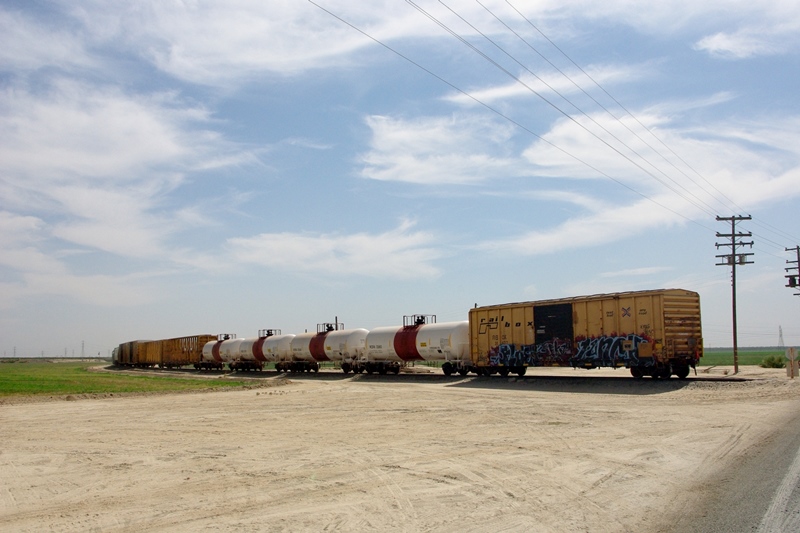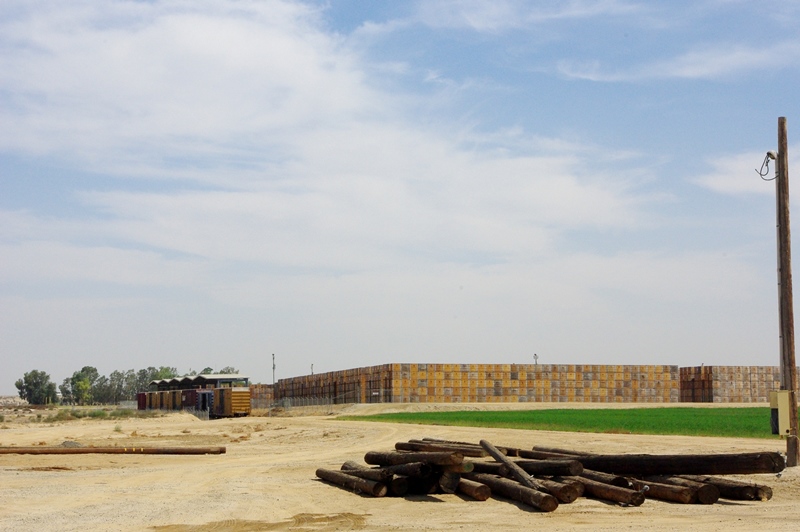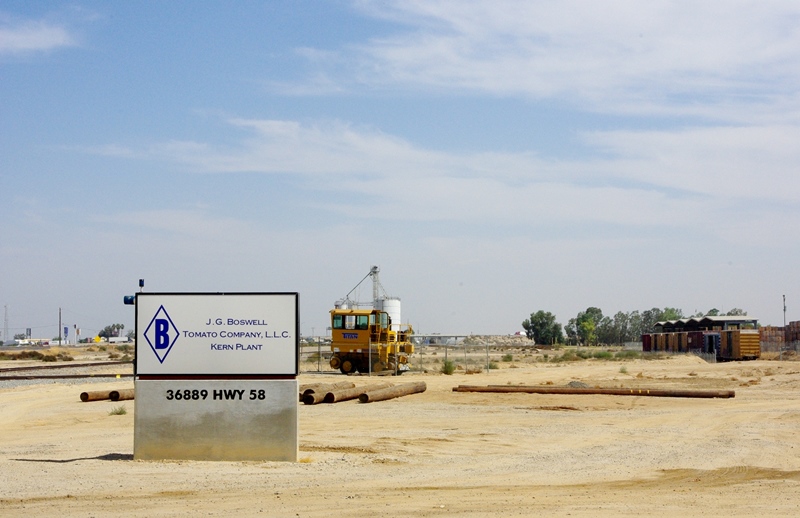07-09-2013, 09:12 AM
Now that you're dealing with agricultural territory, I can at least provide some agri-related rail info from the San Joaquin Valley. I've gotten really interested in the San Joaquin Valley Railroad in the last few years (and have provided info on it to Charles Freericks for his upcoming revised edition of his Southern California Locals book). There is a tomato paste factory on the Buttonwillow branch that loads tomato paste into Railboxes.


What you see in the background appears to be stacks of tomato paste boxes. My guess is that an awful lot of the products from this part of the San Joaquin Valley, tomato paste, onions, garlic, and cheese, goes into frozen pizza!
Here is the end of a train on the Buttonwillow branch:

I believe the Railboxes are carrying tomato paste. The tank cars are carrying liquid fertilizer ingredients, I'm pretty sure. This is another agri-related Industry you can consider.
What you see in the background appears to be stacks of tomato paste boxes. My guess is that an awful lot of the products from this part of the San Joaquin Valley, tomato paste, onions, garlic, and cheese, goes into frozen pizza!
Here is the end of a train on the Buttonwillow branch:
I believe the Railboxes are carrying tomato paste. The tank cars are carrying liquid fertilizer ingredients, I'm pretty sure. This is another agri-related Industry you can consider.





![[Image: file_zps65cdebbf.jpg]](http://i966.photobucket.com/albums/ae149/faraway52/FL2013-2/file_zps65cdebbf.jpg)

![[Image: 4601745227_cbfb55101e.jpg]](http://farm4.staticflickr.com/3316/4601745227_cbfb55101e.jpg)

![[Image: file_zpsb8d21d1b.jpg]](http://i966.photobucket.com/albums/ae149/faraway52/Misc-3/file_zpsb8d21d1b.jpg)
![[Image: file_zps840649e6.jpg]](http://i966.photobucket.com/albums/ae149/faraway52/FL2013-2/file_zps840649e6.jpg)
![[Image: file_zps81464bd1.jpg]](http://i966.photobucket.com/albums/ae149/faraway52/FL2013-2/file_zps81464bd1.jpg)